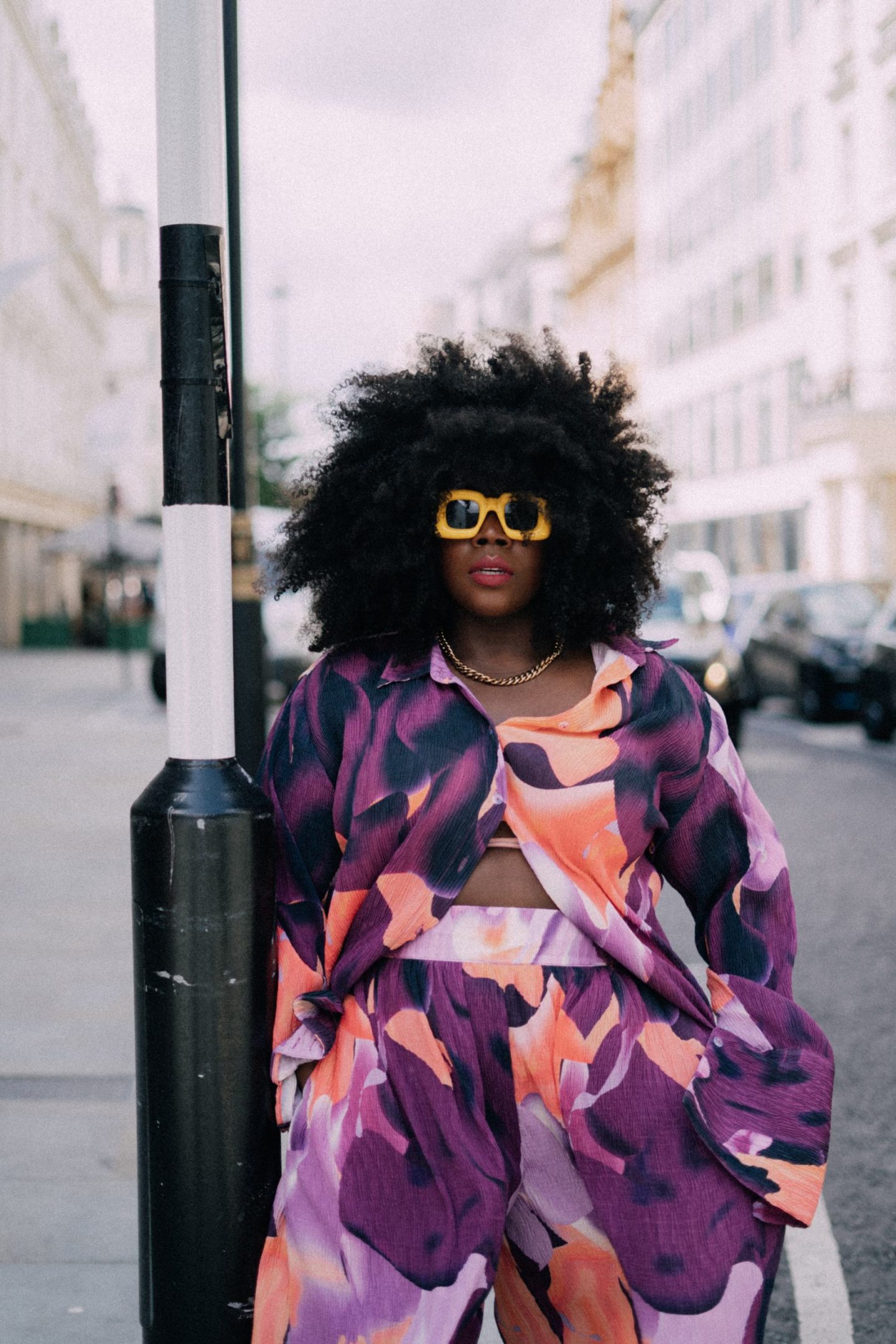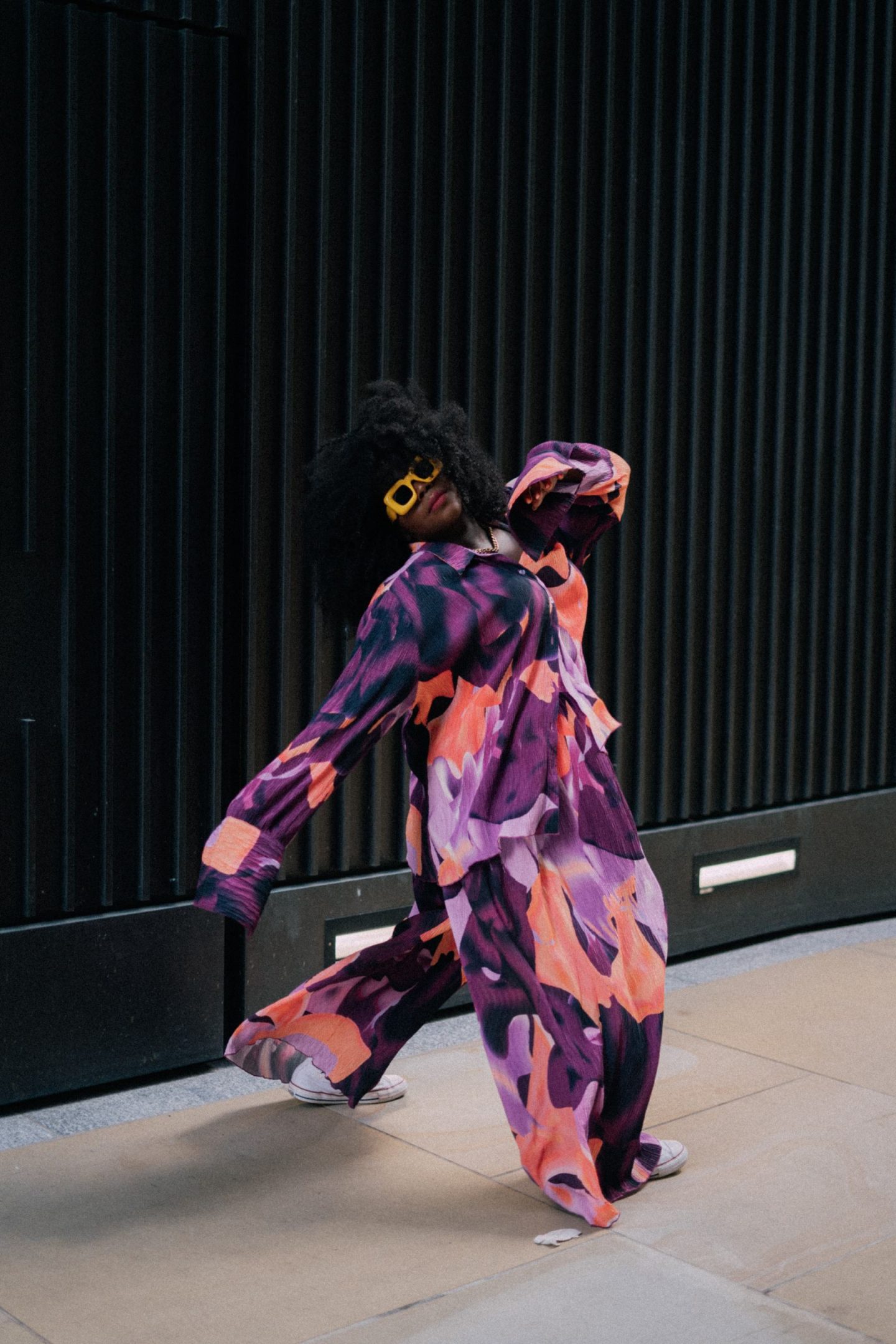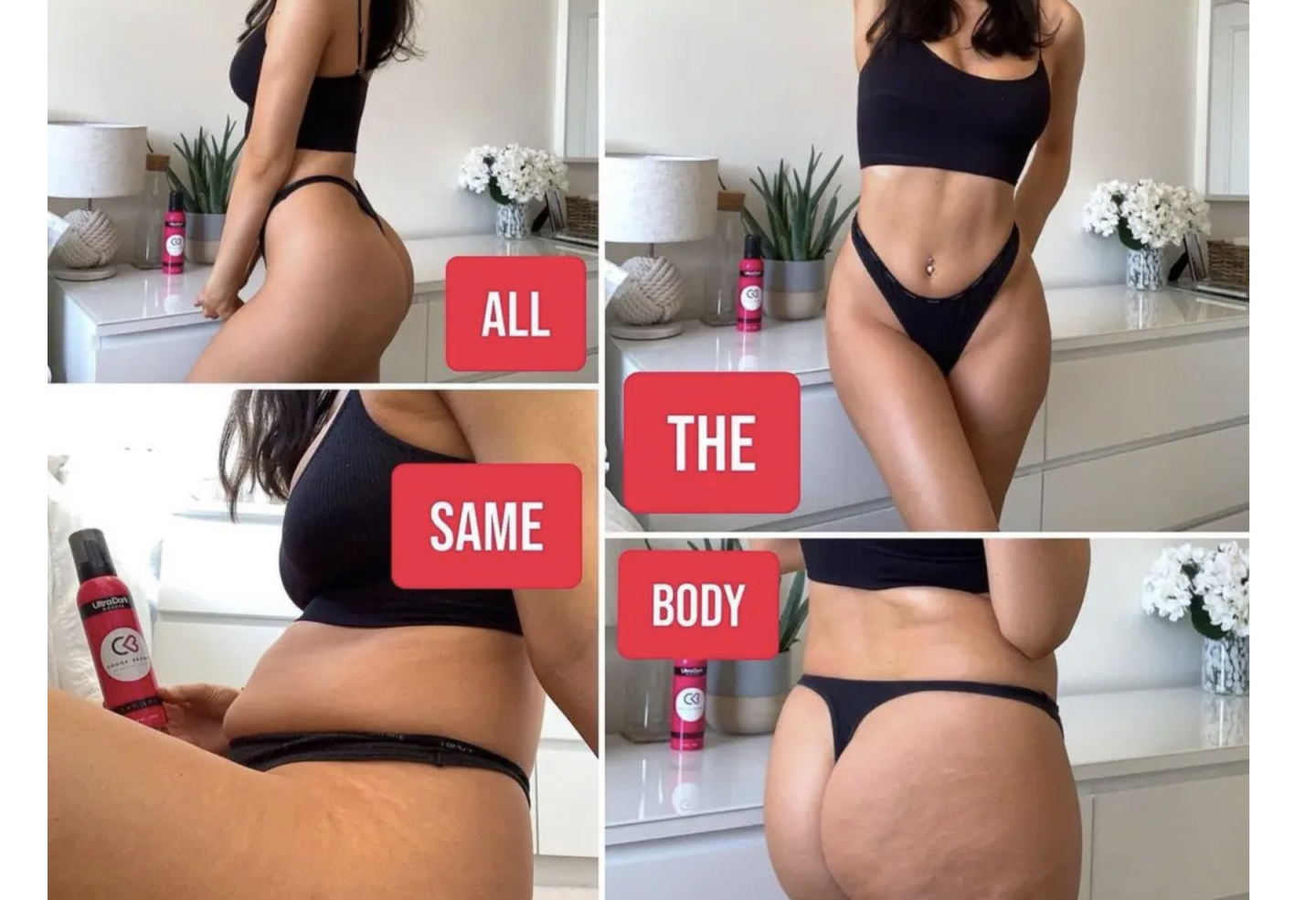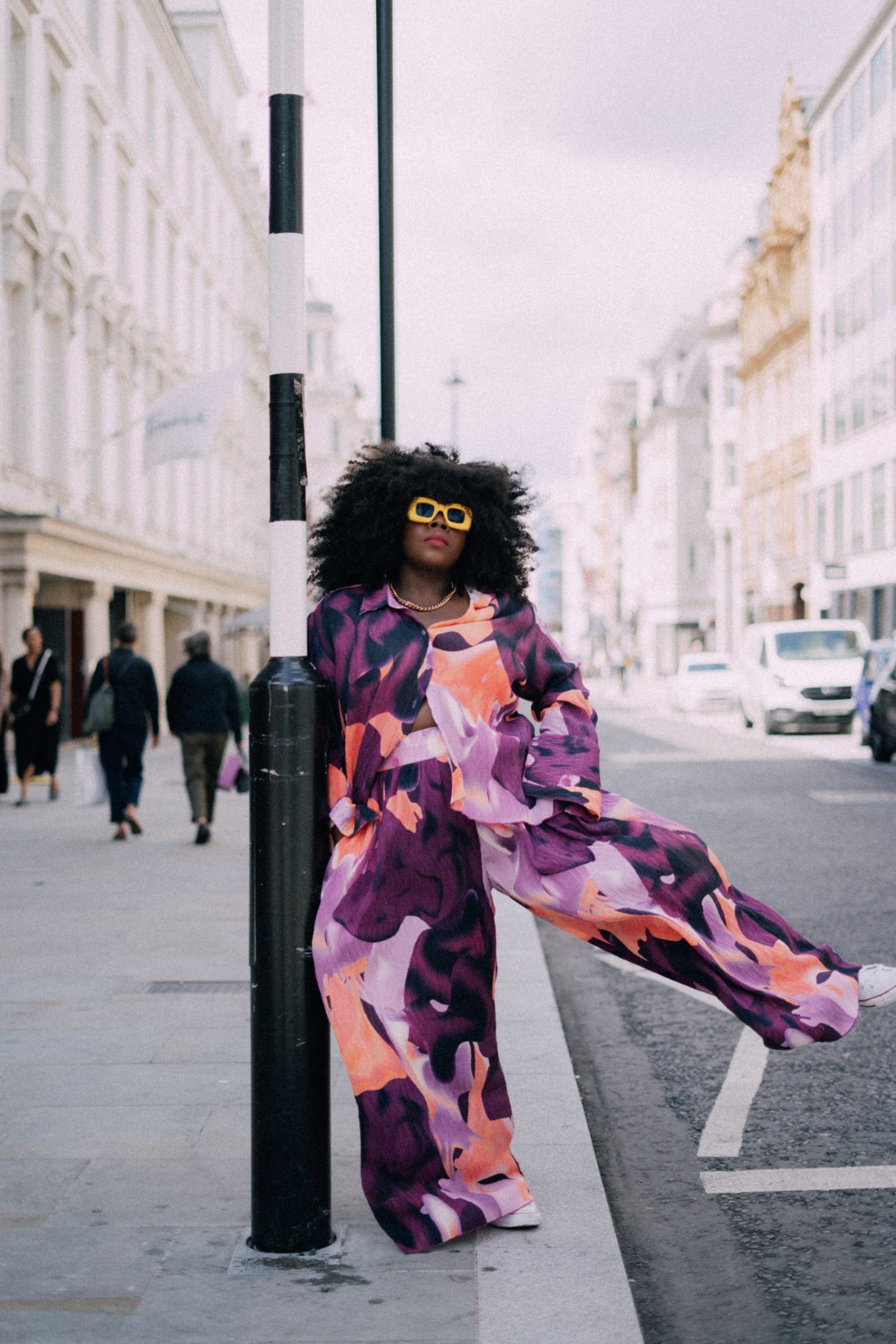

I have been wanting to write this post for a year. I kept starting, then deleting, then starting again, fearing that my words could be taken as harsh, or aggressive. I rewrote certain parts to sound more diplomatic, before deleting it altogether and deciding to speak my truth, deciding to prioritize my thoughts and feelings above everything else. So let’s get into it!
Earlier this week, I came across a TikTok video of a slim woman – no bigger than a UK size 12 I’d assume – complaining about how she no longer believed in the body positivity community due to its ‘toxic positivity’ and its frequent messages of self-love. I found the whole thing interesting, considering her size.
Now don’t get me wrong; toxic positivity IS a thing, and yes there are aspects of certain self-love movements that can be incredibly radical, but as a ‘normal’ sized woman in the body positivity community, if you suddenly felt that the pressure to love yourself was too overwhelming, maybe think about the community you’re in, who it was originally meant for, and the space you are taking up in said community. Ask yourself why you need it in the first place. More than likely, it’s because you, like the rest of us, were taught to be fearful of having or actually being fat.
Body Positivity & Why it was Important
In 2020, I released a book called Fattily Ever After, a book focused on centering the perspectives and life experiences of larger sized fat Black women and women of colour in a climate where the voices of larger fat people were being drowned out and further marginalised in favour of more ‘acceptable’ curvy bodies, ie, mid-sized bodies. In the book, I explain in great detail the beginnings of the current wave of the body positivity community, and why its existence is incredibly important for the most marginalised bodies among us.
The movement was created as a safe space for larger fat women (and more notably, women of colour) to be able to share our life sexperiences, heal and trade perspectives on how we navigate our lives in a world full of rampant fatphobia. It was a community filled with women who had experienced and had been exposed to; systemic fatphobia, abuse, harassment, fat-shaming, fetishisation, dehumanisation and humiliating treatment due to the shapes of their bodies.
Enter: more socially acceptable bodies
The commercialisation of the movement brought forward the visibility of smaller-sized curve models such as Iskra Lawrence, Ashley Graham and the like, and while it was great to see models bigger than a size 8 on the catwalk, in lookbooks and online, there was a clear problem; mid-sized models were being touted as plus size. Women whose bodies featured small waists, big bums, big breasts, small waists, flat-ish tummies and high cheekbones were suddenly being prioritised by the media and brands over the marginalised bodies who had helped create the movement. Advertisers intentionally began to water down fat acceptance to make it more palpable to mainstream audiences – leaving fat people out of its realm altogether.
This sent a clear message to the masses: it’s okay to have body diversity, as long as the curvy body you have is still seen as ‘sexy’ and feminine to society. For the vast amount of brands who shouted about body inclusivity in their body positivity campaigns, it was clear that for them, being sexy and wearing various types of clothing had a limit, and that limit was a size 16/18.
It was at this time that I began to dissociate from the movement altogether. Watching a movement i had become so passionate about be taken over by bodies that commanded more privilege over mine, in real time, in all honesty pissed me off. The movement was no longer a safe space for the vast majority of us who depended on it and who contributed a lot of emotional and intellectual free labour in the face of trolling and online harassment, only to be overshadowed and ignored for bodies who -had not only not done the work – but would piggyback on all the labour done by those before them, due seen as more socially acceptable by society.
Midsize (and slim) bodies become king
All of a sudden, we saw celebrities such as Amy Schumer and Lena Dunham begin to appear in magazine lists as the go-to icons for body positivity. Mid sized models and influencers were being used to model plus size clothing. Brands would boast about inclusive lines, only to stop at a UK size 18. Thinner bodies started to infiltrate the movement, creating entire careers based on the work of fatter people by regurgitating our words through a slimmer lens.
Huh?
Now please don’t get me wrong. EVERY body deserves representation. Having mid sized body representation is valid, as I know that from a fashion point of view, it can be difficult to shop for certain pieces due to having an exaggerated hourglass shape. My beef here is with the co-opting of a specific movement by smaller, more privileged bodies who have not faced the same kind of aggressive systemic fatphobia that larger bodies have. I will also note here that exaggerated hourglass shapes consisting of big hips and smaller waists are considered a standard of beauty, regardless of weight, Equally, it’s also fair to include that not everyone will be happy with how they look, regardless of size.
In 2020, the pandemic hit, forcing all of us to stay and work from home for the majority of the year. In this time, the midsize movement grew expeditiously, seemingly capitalising off the newfound confidence issues suffered by smaller sized people who had gained weight during the pandemic and who were now classed as having ‘mid-sized’ bodies that they did not know how to dress.
While it was important for people to seek out support and resources during this time (and shoutout to the many creators and advocates who shared content) all this did was further alienate the thoughts and perspectives of plus size people in the movement. I couldn’t begin to tell you how annoying it was to see a plethora of slim, white pretty women suddenly gain hundreds and thousands of followers and various self-love campaigns based on doing the bare minimum – or even more annoyingly – photographing themselves bent over showing a single roll on their tummy, while plus sized models, advocates and creators struggled to find work due to not fitting the beauty standards of the body positive community.
We were continuously exposed to ‘Instagram vs Reality’ posts from slim, white, able-bodied women who posed to accentuate their body’s ‘defects’, or to create a whole new ‘defect’ altogether.
The fact of the matter is: the current body positivity movement has been co-opted by privileged bodies, who have implemented their own beauty standards that has excluded the very marginalised bodies that created it in the first place.

Can it go back to how it was?
At this point, I don’t think it can. Of late, i’ve noticed something of a schism develop within the community, with some of the larger fat advocates, creators and models preferring to label themselves under the fat liberation/fat acceptance umbrella – myself included. With the way in which the movement has become so – for lack of a better term – gentrified, as well as fatphobia becoming even more rife, I doubt that we’ll be able to get back to a time where the thoughts, perspectives and visibility of marginalised bodies matter as much and as equally as the bodies considered to have more social currency within the movement.
At this point, the onus is on the brands and media outlets who are still beholden to uplifting certain body types, to provide visibility to those who live in the most oppressed bodies. It’s their job to uplift and promote the most marginalised. It’s their job to create clothing for ALL bodies to wear and feel confident in. Also, if you are a plus sized clothing brand who has built their profits taking money from fat bodies – most of whom are in need of clothing to wear – it would be a good idea to perhaps do or not do a couple of things:
- Hire at least one person in the PR/Marketing team above a size 10.
- Don’t switch around your business model to now include smaller sizes, then promote said model by using and paying advocates/creators under a size 16 to promote the fact that you’ve now sized down, when the whole idea was to cater to plus size bodies.
- Don’t create an accompanying podcast featuring a straight-sized host, who only interviews straight sized guests……on behalf of a plus size brand.
As for the individuals who have taken up space in the community; it’s important for them to acknowledge that they have, infact, taken up a huge amount of real estate here. There is also the sentiment of being *incredibly* privileged; your photos and videos will be shown more and seen by more people because your body conforms to the preferred beauty aesthetic, meaning = more engagement/more paid work and visibility. But conversations about how you hold privilege and how that affects others isn’t hostility towards the individuals; it’s anger at an oppressive system. And the truth is that thin and ‘average sized’ people contribute to that system when they demand inclusion.
Here’s the thing: mainstream body positivity has always already included slim and midsized bodies. If anything, these body types are overrepresented. There have been several body positive campaigns run in recent years where the majority of bodies included are slim and midsized, including several campaigns created by plus-size fashion brand, Simply Be, who tend to feature mostly mid-sized models.
What has the world come to when actual fat bodies are the ones being underrepresented in a community meant to celebrate body diversity?
At the end of the day, when smaller-bodied people within the movement say “let’s have more conversations on our bodies please, ALL bodies matter!” they’re reasserting that their bodies are deserving of more attention than the marginalised bodies. They’re asking a group of marginalised people who have put a lot of emotional labour into a movement to focus on them more because they want to benefit from it, too. Is that not oppressive?
The long and short of it is: body positivity can be for everyone. But when smaller bodied people centre themselves in a movement not created for them, they are using their social capital of thinness to reaffirm oppression. To a lesser degree, this can also apply to mid-sized people, seeing as mid-sized bodies are also considered an accepted standard of mainstream beauty.
You’re co-opting a movement that was created by and for fat people. And by doing this, you’re taking away resources from marginalised people, whilst reasserting yourselves as the most powerful.
As a smaller-bodied person, your privilege allows your voice to be heard much louder than the multitude of fat people who came before you. And when you use the platform that you’ve been allotted to speak only for the feelings of other smaller-bodied people, you ignore the experiences fat people, thus contributing to the oppression we face.
If it’s being fat that we hate so much as a society, then it’s fat bodies that need the most attention in movements working to fix that. Beauty does not end at a UK size 16, and it’s time the body positive community, – as well as brands and the media – realised this.
August 20, 2023
Steph
The Midsize Movement Has Killed Body Positivity – An Essay.
